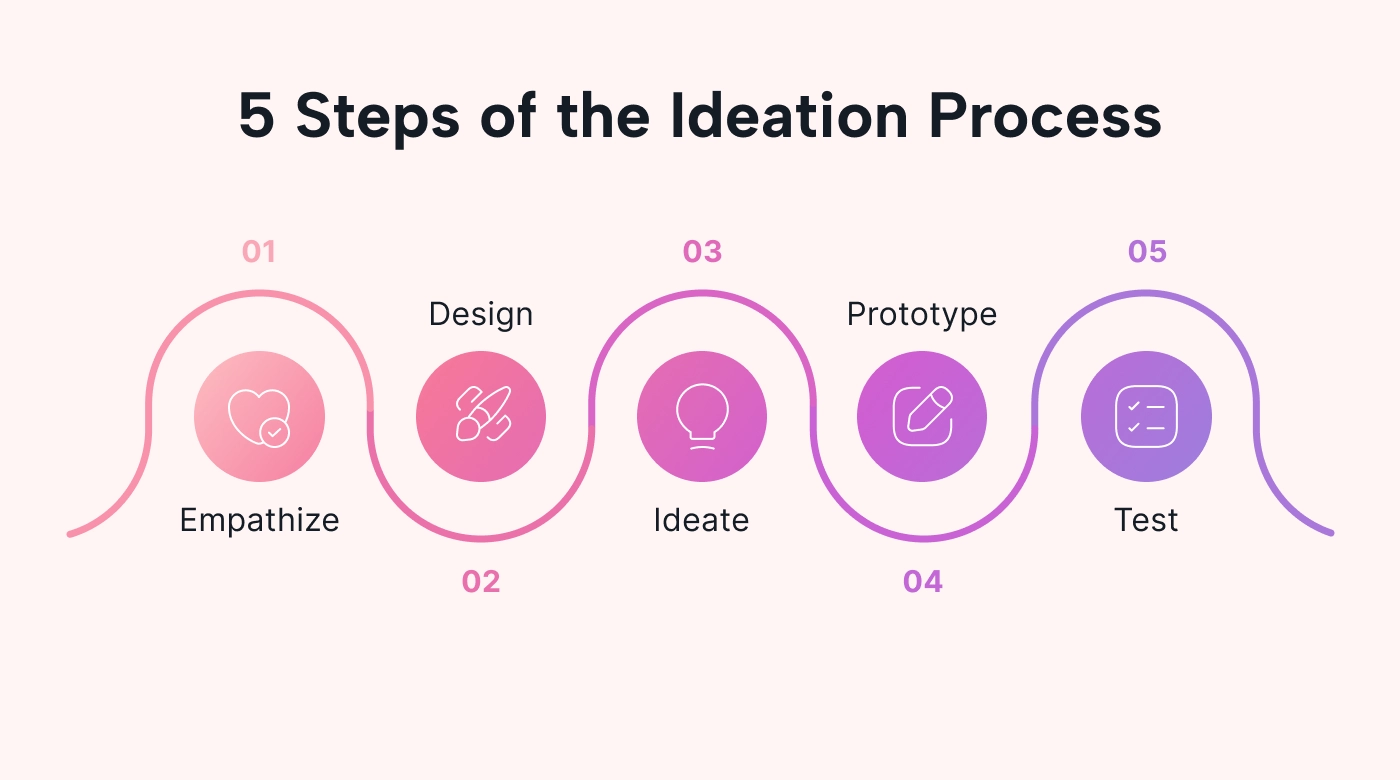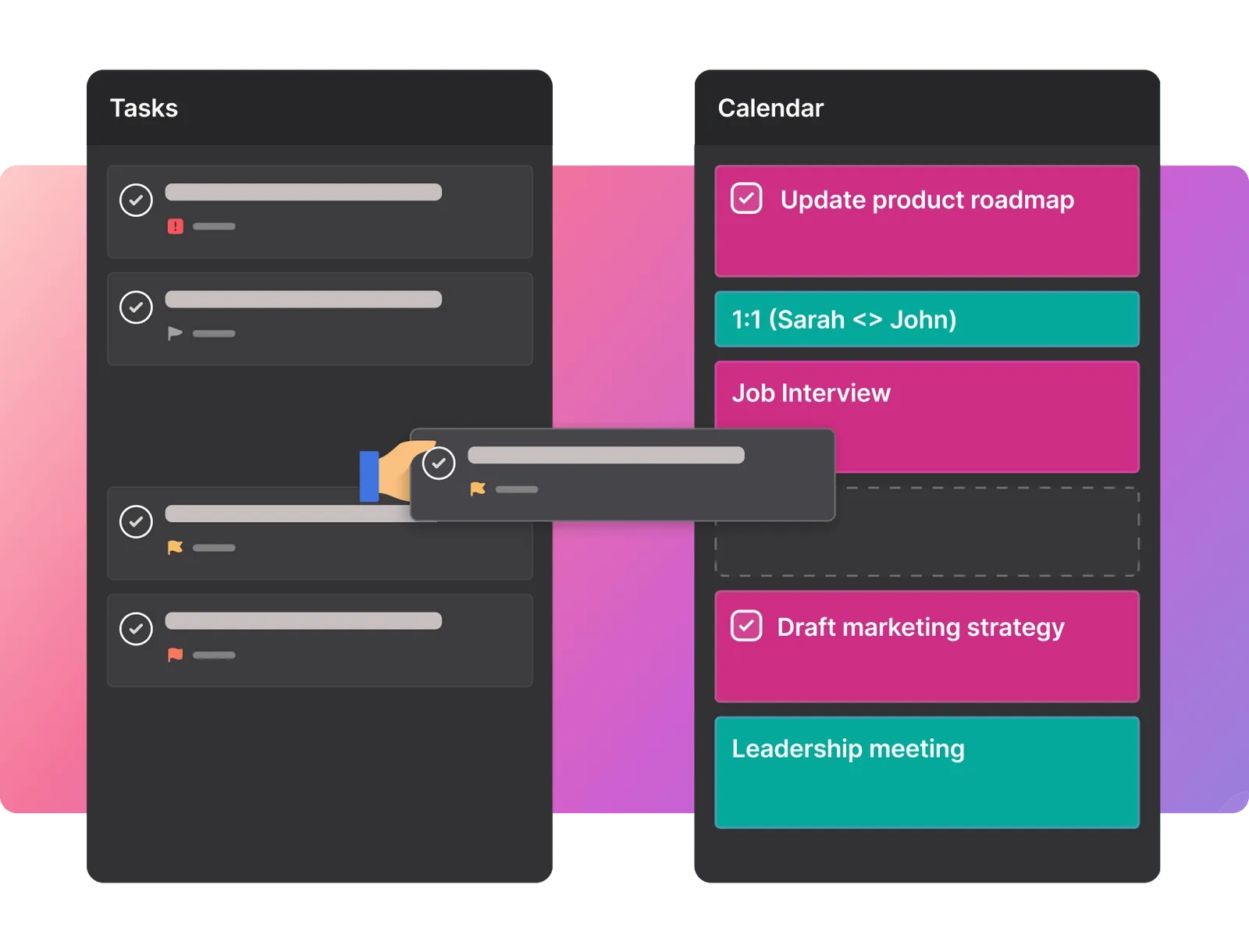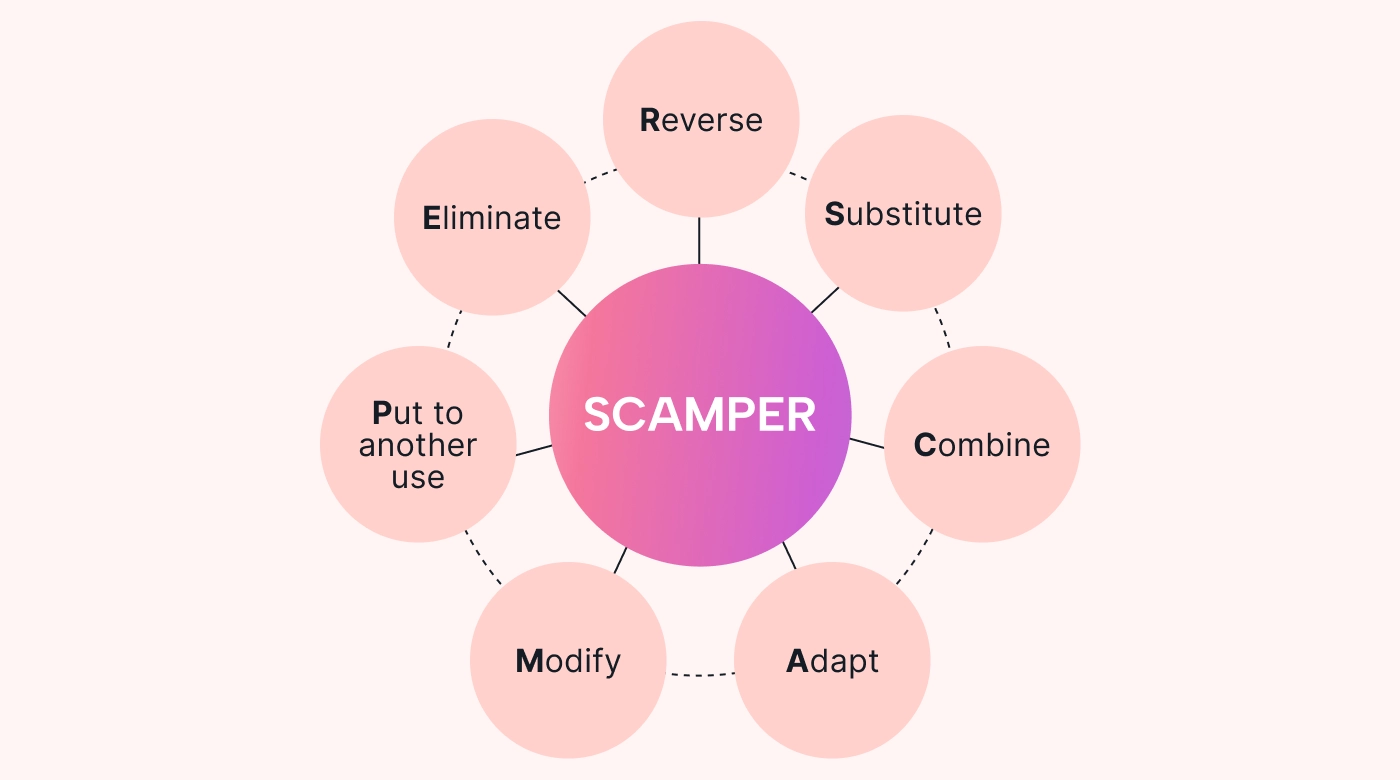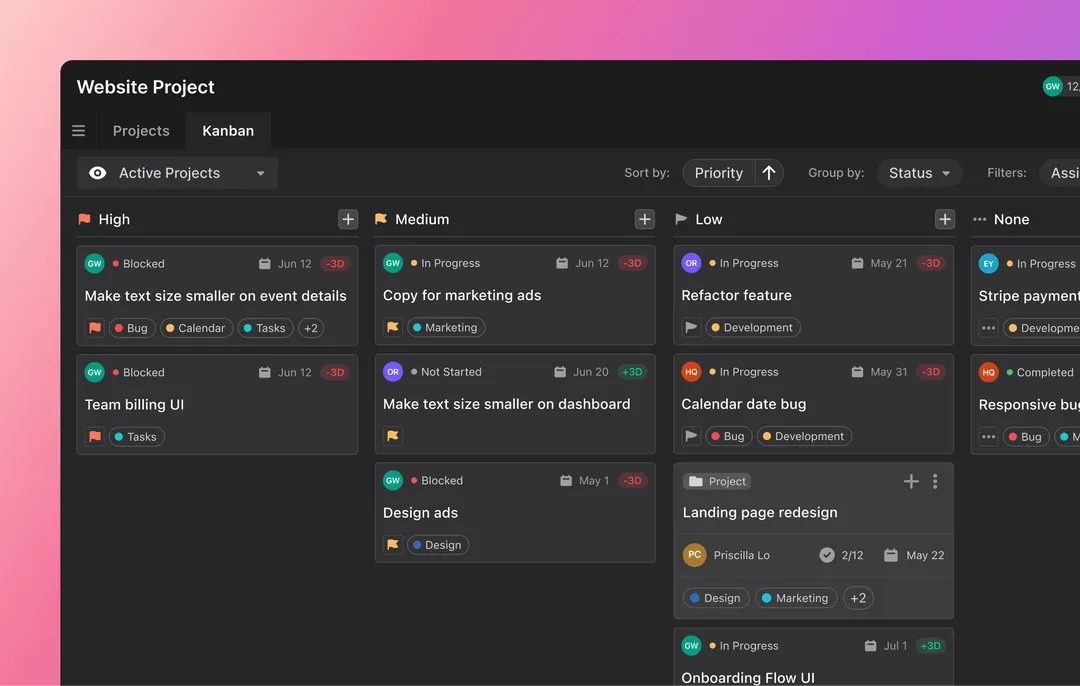New ideas are essential to business success. But managing different perspectives and fostering innovation? That can be challenging — especially when you have a million other things on your plate.
This is where ideation strategies can help. With the right strategy in place, you can encourage innovative and creative ideas for your business.
Keep reading to discover what an ideation strategy is, how to create one, and our best practices for ensuring ideation success.
What is an ideation strategy?
An ideation strategy is a process for generating fresh ideas, concepts, or solutions to a problem.
Ideation strategies involve specific techniques and frameworks (which we’ll explore later) that encourage creative thinking and innovation.
Let’s use customer service to show how it works.
Say you want to generate new ways of improving your customer service. You host brainstorming sessions with employees from different departments, which bring the following ideas to light:
- Implementing chatbots for quicker customer responses
- Establishing a loyalty program to reward customers and increase retention
- Adding a self-service option to your website to improve convenience
These ideas are evaluated, refined, and implemented to enhance customer service.
Why is ideation important?
In a recent survey on human capital trends, 73% of respondents said that keeping human imagination on par with technological innovation is important. But only 9% are on their way to achieving that balance.
That’s a problem. If we can’t maintain our ability to innovate, we’re going to lose ground. The reality is we’re living in a time with massive potential thanks to AI and our interconnected world. But without a constant influx of fresh ideas and solutions, problems, roadblocks, and inefficiencies are going to stop progress. That’s true at organizational, national, and global levels.
Let’s take a look at some of the key benefits of ideation.
Creating innovative solutions to problems
Following the ideation process helps you solve problems in ways you might never have considered otherwise. You think about things from different perspectives, approaching problems from a different angle to find the ideal solution.
Encouraging collaboration and teamwork
Throughout the ideation process, teams brainstorm lots of ideas, mind-map solutions, and even role-play scenarios to better understand the problem. As a result, teams have to collaborate, boosting their creativity in the process.
Focusing on user-centered solutions
The end user is at the heart of ideation. You’re constantly focused on how to solve their problem in the best possible way, putting you in a strong position to create solutions that work.
Improving through an iterative process
Ideation isn’t linear — it’s a process of idea generation, testing, and refining. This means you’re continually improving your ideas, ensuring that you land on the best possible solution to each problem that pops up.
Now, let’s walk through the ideation process, including how you can use it in your own business.
The ideation process in 5 steps
There are five key components in the ideation process, each playing an important part in ideation success:
 |
Keep reading to find out how each of these steps works and how to use the ideation process successfully in your own business.
1. Empathize
The first step of ideation is to empathize. This means understanding the needs, motivations, and pain points of end-users and stakeholders.
A marketing team, for example, would pay attention to the needs and wants of their target customers. In doing so, they can better understand what their end users are looking for.
Empathizing serves as the foundation for the rest of the ideation process, ensuring you keep customer needs at the heart of your idea generation.
But how can you empathize with your end users and stakeholders?
Let’s take a look:
- Immerse yourself in their environment. Spend time whenever your end-users interact with your product or service. This gives you firsthand insights into their needs, challenges, and experiences.
- Conduct interviews. Talk to end users and stakeholders directly to delve deeper into their experiences, preferences, and pain points. Ask open-ended questions and actively listen to their responses to help you empathize with their experience on a more personal level.
- Observe their behaviors. See how users interact with your product or service, the frustrations they encounter, and what they find most valuable. Observing these actions might help you identify pain points and needs that wouldn’t crop up through direct questioning alone.
2. Design
This next step involves analyzing the insights and data you gained in the previous stage to define your users’ needs and problems. In other words, here, you interpret the results to define the problem.
A software development team, for example, could look at customer feedback surveys or heat maps of previous designs to identify problems their users are experiencing.
This step is about quantity, not quality. Instead of coming up with concrete solutions, you focus on generating as many pathways as possible that could solve the problem.
There are a few different ways to work through this process:
- Wireframing. This gives you a simple outline of your product’s structure. Mapping this framework helps you visualize how the system works and where users are running into trouble.
- Storyboarding. This is a series of illustrated frames that depict key moments in the user journey. It’s a visual way of understanding how customers use your product or service and the challenges they face along the way.
- Creating user personas. A user persona is a fictional representation of a specific type of customer. It helps you visualize their goals, needs, and behavior, which can bring pain points to light.
Top tip: Use AI design tools to visually present the findings from the design phase.
At the end of the design phase, you’ll create a problem statement — a concise description of the challenge that needs to be addressed that guides you and your team through the rest of the ideation process.
Here’s how a problem statement might look for a software development team:
“The user interface of our app lacks intuitive navigation, resulting in a high bounce rate and low user engagement. We must redesign the interface to improve usability, user satisfaction, and retention rates.”
3. Ideate
The ideation phase is where the magic happens.
Starting with the problem statement, your ideation team generates a variety of potential solutions. The aim here is to boost innovation by exploring a wide range of possibilities and perspectives to create a rich pool of ideas.
Different ideation techniques include the following:
- Brainstorming. This is a group discussion that produces a large amount of ideas in a short amount of time.
- Mind mapping. Here, you organize many ideas around a central concept, exploring the connections between the ideas and identifying new opportunities.
- Role-playing. With role-playing, you assume different roles related to the problem (like putting yourself in the shows of the end user, for example). The aim is to explore new viewpoints and generate ideas from varied perspectives.
Wondering which ideation technique to use? It depends on the type of group you’re working with and what you want to achieve. If you prefer a more organized and structured approach, a mind map might be best. If you want to cover as much ground as possible, a brainstorming session might be the better choice.
 |
Top tip: Whichever option you choose, be sure to use the “how might we” approach. Instead of saying, “We need to do X, Y, and Z,” ask, “How might we achieve X, Y, and Z?” This helps you focus on the outcome, keeping the user at the heart of your discussion.
4. Prototype
Prototyping involves testing and evaluating your ideas from the “Ideate” phase. The goal is to quickly visualize and iterate on design concepts, gather feedback, and identify areas for improvement. This allows you to visualize ideas and refine designs before investing time and resources in their full implementation.
Prototype your ideas using the following suggestions:
- New process workflows in systems. If you’re creating a new business process, use an online platform to test the waters before going live.
Take a look at Motion as an example. Add new workflows and try them out before launching them among the rest of your team. If they’re not going to plan, you can quickly and easily make changes before rolling them out.
 |
- Low-fidelity sketches or wireframes. Create top-level designs of your ideas to get a feel for how they work and how users will interact with them. With an app, for example, you can plot a low-fi wireframe to outline how the app will work and how to navigate it.
- High-fidelity models or interactive prototypes. These prototypes are more in-depth, allowing you to see exactly how the new design will work as if it were live. This gives you a better idea of the reality of your ideas, but it also means they can be more time-consuming and costly to produce.
5. Test
The final step is testing, which involves evaluating and refining the prototype. The goal is to validate assumptions and usability, ensuring the final idea is as effective and efficient as possible.
Here are a couple of ways to approach the testing stage:
- Observe the end users. Give your end users your prototype and observe their actions while they use it. Are they struggling in certain areas? Are things running smoothly? Your observations will tell you whether your prototype is ready to go or needs adjustment.
- Gather feedback from stakeholders. Ask stakeholders and end users to provide feedback about the prototype, giving them a chance to share what they liked or didn’t like about it.
Best practices for creating an ideation strategy
When moving through the ideation process, there are some best practices to keep in mind to boost your chances of success. Here are a few of them:
Use structured frameworks
Ideation frameworks can support different parts of the ideation process, mostly during the “Ideate” phase. This helps you generate more ideas and approach problems from unique perspectives.
The SCAMPER framework is a good example. It provides a seven-part approach to ideation, encouraging you to consider things like swapping or combining features to improve your product or service.
SCAMPER is broken down as follows:
 |
And it doesn’t stop there. Here are some other structured frameworks:
- TRIZ (a Russian acronym that translates as “The Theory of Inventive Problem-Solving”) is based on the premise that innovation follows patterns. It’s a systematic approach to solving problems by eliminating contradictions and finding innovative solutions.
- Crazy 8s is a framework that involves writing one idea in eight different ways, encouraging you to approach the same problem from a different perspective every time.
Create a diverse team
Having a diverse team gives you more perspectives in the ideation process. How? By bringing different skills and experiences to the table.
Think about it; the more skills and experience your ideation team has, the better chance you have of generating a wider pool of ideas.
But how exactly do you create a diverse team?
Including people from different levels of the business is a good start, as this ensures you have a solid mixture of higher-level and lower-level employees in the group.
You can also encourage voluntary participation, giving people a chance to put themselves forward if they think they’re a good fit. This opens up the pool of potential team members, helping you connect with people you might not have considered otherwise.
Top tip: Creating a diverse team doesn’t mean assembling random people from different departments. You should only include those who are relevant to the process, such as those with experience or skills related to the problem you’re trying to solve.
Track and monitor performance
Setting goals and metrics for success ensures that you’re on schedule to achieve the goals of your ideation strategy. If you’re not, you can make adjustments or go back to the drawing board to create an updated strategy.
To track your performance, it’s a good idea to come up with goals and metrics before launching new ideas. That way, you can make sure you’re on track in real time — plus, you get a solid foundation for measuring your success.
For example, you might set the following SMART goal to measure your performance:
“Improve customer retention on the mobile app by 25% over the next financial quarter by implementing new features and enhancing usability.”
Top tip: Use a platform that keeps tabs on performance in real time. With a project management app, for example, you can track your progress to make sure you’re on schedule with certain tasks and workflows.
 |
Find out more about using Motion’s task management features.
Use Motion to work with your team and generate powerful ideas
Creating an ideation strategy helps you structure the way you generate, implement, and monitor the performance of promising ideas. When done well, it can help you successfully launch new products, services, or features to improve the user experience.
Use an AI-powered task management platform like Motion to help you and your team collaborate throughout the ideation process. Enable remote communication, share updates, and keep tabs on tasks to ensure your ideation activities are progressing as they should.
Try Motion for free to see for yourself.

Vicki Chen is a content writer and marketer using proven storytelling methods to create high-quality copy and content for SaaS companies. When she's not writing, she's spending time with Taco, her rescue dog.




